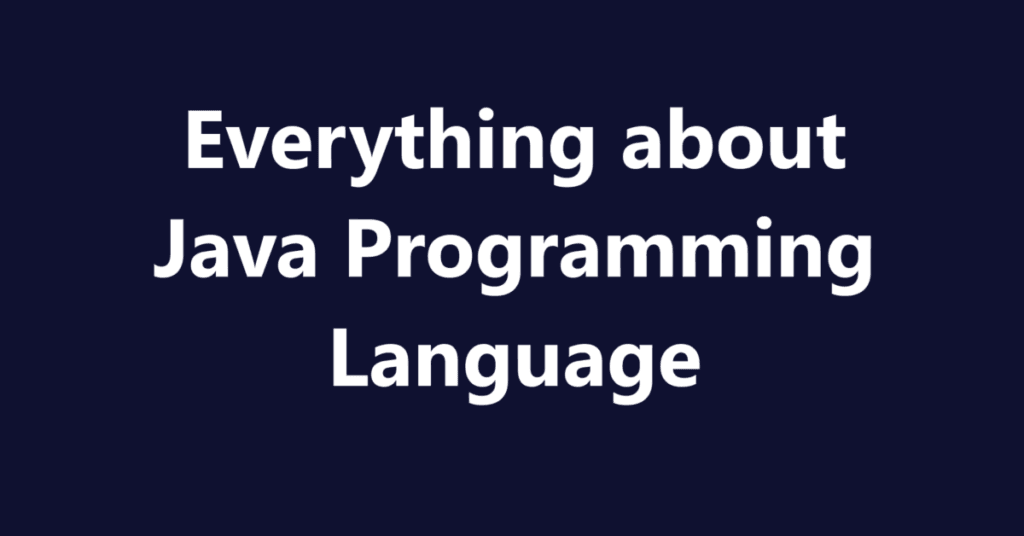Key Points
- JavaScript: A high-level, interpreted programming language essential for web development.
- Supports dynamic and interactive web content.
- Evolved from a simple scripting language to a multi-faceted tool for front-end, back-end, mobile apps, and more.
- Backbone of modern frameworks: React, Angular, Vue.js, and Node.js.
- Versatility: Enables games, IoT, and even machine learning in the browser.
- Performance optimization with WASM (Web Assembly).
- Constant updates improve capabilities and maintain relevance.
JavaScript. The language that powers the modern web.
From interactive elements to complex single-page applications, JavaScript is ubiquitous. But what exactly is JavaScript, and what makes it so integral to the online experience? This post aims to provide a comprehensive overview of JavaScript, covering its core concepts, evolution, use cases, and future trends. Whether you’re a budding developer or a seasoned programmer looking for a refresher, this deep dive should offer valuable insights into the world of JavaScript.
What is JavaScript? Beyond the Basics
At its core, JavaScript is a high-level, interpreted programming language that conforms to the ECMAScript specification. Let’s break that down:
- High-level: This means JavaScript abstracts away many of the low-level complexities of machine code, allowing developers to focus on logic and functionality rather than memory management.
- Interpreted: JavaScript code is typically executed line by line by a JavaScript engine (like V8 in Chrome or SpiderMonkey in Firefox) rather than being compiled into machine code beforehand. This allows for faster development cycles, as you can see changes in real-time. However, it can sometimes lead to performance trade-offs compared to compiled languages. Modern JavaScript engines often employ just-in-time (JIT) compilation techniques to optimize performance.
- Programming Language: JavaScript provides the tools and structures necessary to write instructions that a computer can understand and execute.
- ECMAScript Specification: ECMAScript is the standardized specification that defines the core syntax and semantics of JavaScript. Think of ECMAScript as the blueprint and JavaScript as the actual implementation. Different JavaScript engines adhere to the ECMAScript standard, ensuring a degree of consistency across various browsers and environments.
A Brief History of JavaScript
JavaScript was created by Brendan Eich at Netscape in 1995, initially under the name Mocha and later LiveScript, before finally being rebranded as JavaScript. Its purpose was to add interactivity to static HTML pages. In the early days, JavaScript was often dismissed as a “toy language,” but it quickly evolved into a powerful tool capable of handling complex tasks.
Key milestones in JavaScript’s evolution include:
- ECMAScript 1 (1997): The first version of the ECMAScript standard, solidifying JavaScript’s foundation.
- ECMAScript 5 (2009): Introduced features like strict mode,
JSON.stringify, andJSON.parse, enhancing security and data handling. - ECMAScript 6 (ES2015): A major update that brought significant changes, including arrow functions, classes, modules,
letandconst, promises, and more. ES2015 revolutionized JavaScript development and paved the way for modern frameworks and libraries. - Ongoing Annual Updates (ES2016+): ECMAScript now follows a yearly release cycle, with smaller, more incremental updates that gradually enhance the language.
Core Concepts of JavaScript
Understanding the fundamental concepts of JavaScript is crucial for writing effective and maintainable code. Here’s a rundown of some of the key building blocks:
- Variables: Variables are containers for storing data. In JavaScript, you can declare variables using
var,let, orconst. The key difference lies in their scope and hoisting behavior.letandconstare block-scoped, meaning they are only accessible within the block of code where they are defined.varis function-scoped.constis used for variables whose values should not be reassigned after initialization. - Data Types: JavaScript has several primitive data types:
- Number: Represents numeric values, including integers and floating-point numbers.
- String: Represents text.
- Boolean: Represents
trueorfalse. - Undefined: Represents a variable that has been declared but not assigned a value.
- Null: Represents the intentional absence of a value.
- Symbol: Represents a unique and immutable value, often used as object property keys.
- BigInt: Represents integers of arbitrary precision, useful for handling very large numbers.
JavaScript also has a non-primitive data type:
- Object: A collection of key-value pairs. Objects are fundamental to JavaScript and can be used to represent complex data structures.
- Operators: Operators perform operations on values. JavaScript supports Arithmetic, Assignment, Comparison, Logical, and Bitwise Operators.
- Control Flow: Control flow statements determine the order in which code is executed, like
if...else,switch, loops (for,while, anddo...while). - Functions: Functions are reusable blocks of code. They can be written in different styles: Function Declarations, Function Expressions, and Arrow Functions.
- Objects and Prototypes: Prototypes provide a mechanism for inheritance in JavaScript, allowing objects to share behaviors.
- Arrays: Arrays store ordered collections of data, enabling complex data handling.
- DOM Manipulation: The Document Object Model (DOM) allows interaction with and modification of HTML structures dynamically.
- Events: Events enable interactive behavior in web pages, such as responding to user clicks or input.
- Asynchronous Programming: Handles long-duration tasks like fetching remote data without blocking the main thread using mechanisms like callbacks, promises, and async/await.
JavaScript in Action: Use Cases and Applications
JavaScript’s versatility makes it suitable for a wide range of applications, far beyond simply adding “fluff” to websites. Here are some common use cases:
- Front-End Web Development: Frameworks like React, Angular, and Vue.js empower developers to build interactive user interfaces and single-page applications (SPAs).
- Back-End Web Development: Node.js enables developers to run JavaScript server-side, powering scalable back-end systems.
- Mobile App Development: Frameworks like React Native allow for the creation of native mobile apps using JavaScript.
- Desktop App Development: Tools like Electron enable cross-platform desktop apps built with JavaScript.
- Game Development: JavaScript game engines like Phaser and PixiJS facilitate browser games.
- Internet of Things (IoT): JavaScript powers IoT devices and cloud communication systems.
- Machine Learning: Tools like TensorFlow.js allow leveraging machine learning capabilities within the browser or Node.js.
Frameworks and Libraries: Enhancing Productivity and Efficiency
JavaScript has a rich ecosystem of frameworks and libraries like React, Angular, Vue.js, Node.js, and smaller utilities like jQuery and Lodash, enhancing developer productivity.
Best Practices for Writing Clean and Maintainable JavaScript
- Use meaningful variable and function names.
- Follow a consistent coding style.
- Write modular code.
- Add comments to clarify complex logic.
- Conduct rigorous testing of code.
- Minimize global variables.
- Handle errors with try-catch blocks.
- Optimize performance.
- Stay updated with current JavaScript trends.
The Future of JavaScript
- Web Assembly (WASM): Near-native performance web applications.
- Serverless Computing: Simplifies cloud-based deployments.
- AI and ML: Browser-based AI/ML insights and servers.
- New Developer Tools: Constantly innovating to increase efficiency.
10 FAQs about JavaScript
- What is JavaScript?
JavaScript is a versatile programming language primarily used for making web content dynamic and interactive.
- How is JavaScript different from Java?
Despite their similar names, Java and JavaScript are entirely different languages designed for separate use cases.
- What can you do with JavaScript?
Create interactive web elements, build web apps, mobile apps, game software, and even run analysis for machine learning.
- Is JavaScript a front-end or back-end language?
JavaScript can be used for both, thanks to Node.js on the back end and a multitude of front-end frameworks.
- What are some features unique to JavaScript?
Dynamic typing, asynchronous programming, prototypal inheritance, and its ability to run in-browser are key features.
- Which companies use JavaScript?
Almost all modern companies utilize JavaScript, including Google, Facebook, Netflix, and Amazon.
- What are JavaScript frameworks?
Frameworks like React, Angular, and Vue simplify common web and app development tasks.
- Why is JavaScript single-threaded?
JavaScript was designed to work efficiently in the browser environment, avoiding multi-threading complexities.
- What is the Document Object Model (DOM)?
DOM is a representation of an HTML document that JavaScript can interact with to manipulate content dynamically.
- How do I start learning JavaScript?
Start with the basics using free resources online, gradually exploring intermediate topics and frameworks.
Conclusion
JavaScript is a powerful and versatile language that is essential for modern web development. By understanding its core concepts, exploring its various use cases, and following best practices, you can harness the full potential of JavaScript to build amazing web applications. The journey of learning JavaScript is continuous, but with dedication and a curious mind, you can become a proficient JavaScript developer and contribute to the ever-evolving world of the web.


